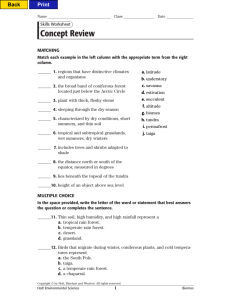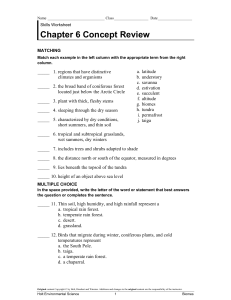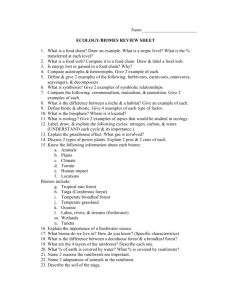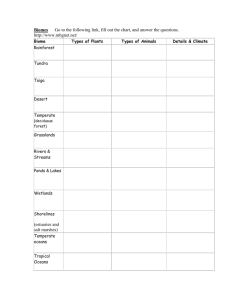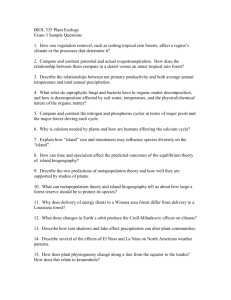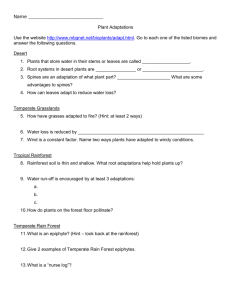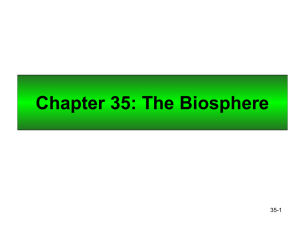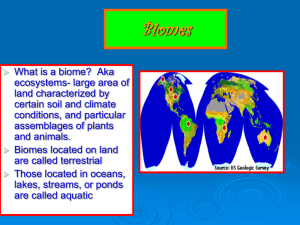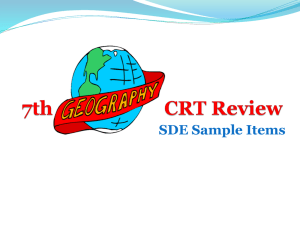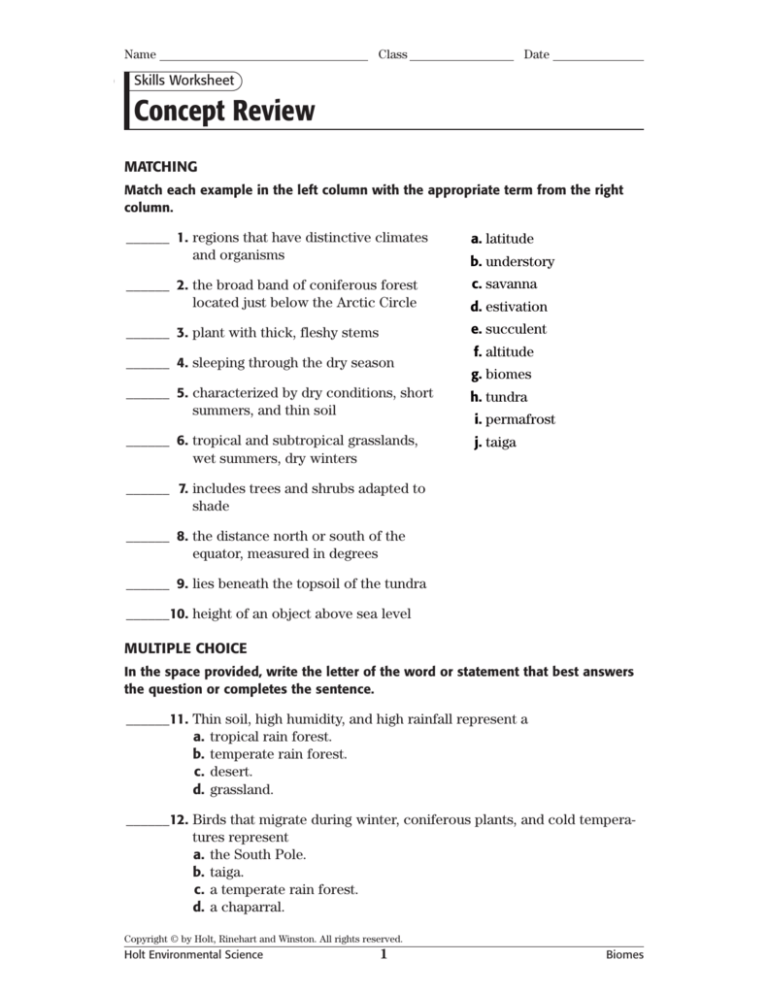
Name
Class
Date
Skills Worksheet
Concept Review
MATCHING
Match each example in the left column with the appropriate term from the right
column.
______ 1. regions that have distinctive climates
and organisms
a. latitude
b. understory
c. savanna
______ 2. the broad band of coniferous forest
located just below the Arctic Circle
d. estivation
______ 3. plant with thick, fleshy stems
e. succulent
______ 4. sleeping through the dry season
______ 5. characterized by dry conditions, short
summers, and thin soil
______ 6. tropical and subtropical grasslands,
wet summers, dry winters
f. altitude
g. biomes
h. tundra
i. permafrost
j. taiga
______ 7. includes trees and shrubs adapted to
shade
______ 8. the distance north or south of the
equator, measured in degrees
______ 9. lies beneath the topsoil of the tundra
______10. height of an object above sea level
MULTIPLE CHOICE
In the space provided, write the letter of the word or statement that best answers
the question or completes the sentence.
______11. Thin soil, high humidity, and high rainfall represent a
a. tropical rain forest.
b. temperate rain forest.
c. desert.
d. grassland.
______12. Birds that migrate during winter, coniferous plants, and cold temperatures represent
a. the South Pole.
b. taiga.
c. a temperate rain forest.
d. a chaparral.
Copyright © by Holt, Rinehart and Winston. All rights reserved.
Holt Environmental Science
1
Biomes
Name
Class
Date
Concept Review continued
______13. The top layer in a tropical rain forest is the
a. canopy.
b. understory.
c. emergent layer.
d. tree line.
______14. Extreme temperatures, abundant precipitation, rich, deep soils, and a
growing season of four to six months represent a
a. tropical rain forest.
b. taiga.
c. temperate deciduous forest.
d. savanna.
______15. The biome with the highest species diversity is the
a. taiga.
b. tundra.
c. tropical rain forest.
d. savanna.
______16. Hot summers and cold winters, low to moderate rainfall, few trees,
and rich, fertile soil represent a
a. tundra.
b. temperate grassland.
c. temperate deciduous forest.
d. desert.
______ 17. As you move from the equator toward the North Pole, you would be
likely to see
a. rain forests, then deserts, then taiga.
b. tundra, then deserts, then grasslands.
c. grasslands, then tundra, then rain forests.
d. temperate deciduous forests, then taiga, then rain forests.
______18. Factors that influence where plants grow include
a. longitude.
b. climate.
c. biome maps.
d. Both (a) and (b)
Copyright © by Holt, Rinehart and Winston. All rights reserved.
Holt Environmental Science
2
Biomes



